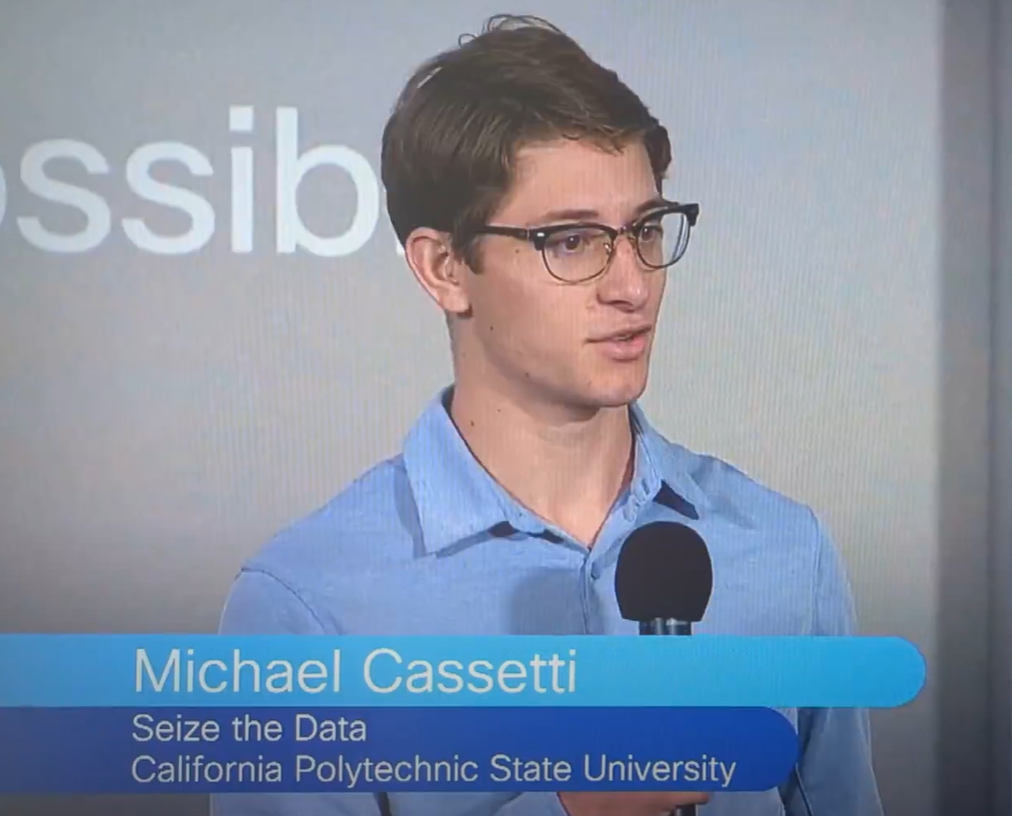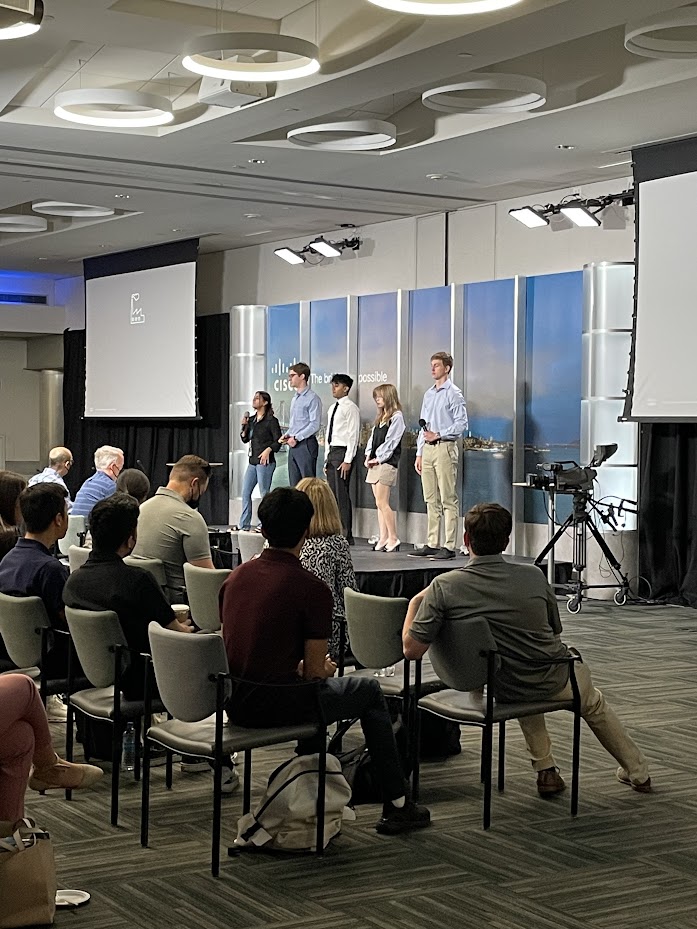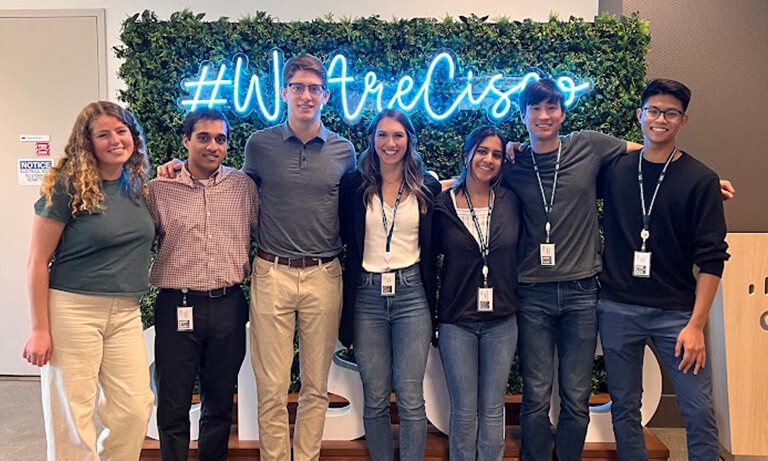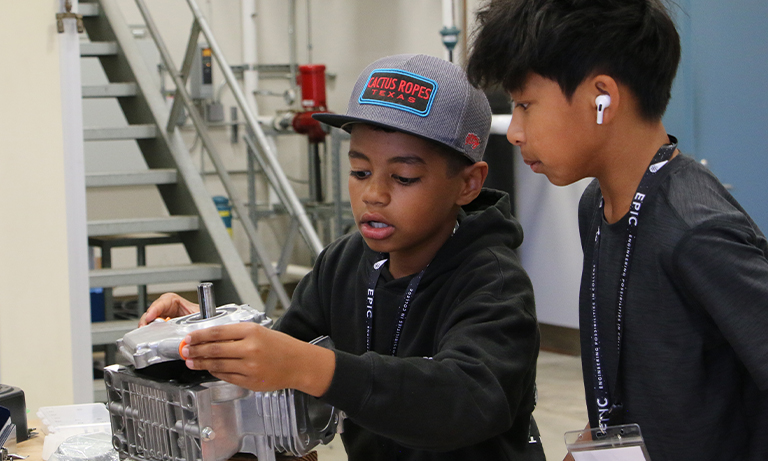Michael Cassetti, Mahek Karamchandani use skills learned in classroom to solve supply chain problem
Cal Poly engineering student Michael Cassetti earned accolades during his internship with Cisco when he helped developed a solution to a supply chain problem using skills learned in one of his favorite classes.
Cassetti and over 30 other interns were tasked with creating decision-making models to combat supply chain issues faced by so many companies over the last few years. At the end of the program, the interns all gathered at Cisco’s San Jose campus to present their models to a panel of judges who awarded first place to Cassetti’s project team, Seize the Data.
Cassetti’s fellow IME classmate Mahek Karamchandani also was part of the winning team.
“Taking course material right from the classroom into the workforce is what Cal Poly’s Learn by Doing philosophy is all about,” said Cassetti, who is in his fourth year studying industrial engineering with a minor in computer science.

Currently, Cisco’s business units work individually and handle field failures differently, which can lead to varying customer service experiences, according to Cassetti.
When a part fails in one business unit, for example, the fix could be an easy one, but when the part failure is pervasive across different product families and business units, the issue grows exponentially.
Over the 12-week program, intern teams within the supply chain organization worked with mentors and subject matter experts to build models that would deliver a consistent customer experience regardless of the business unit or product family.
Cassetti knew just the approach he would take after receiving instruction in machine learning algorithms during his Applications of Enterprise Analytics (IME 372) class with Professor Puneet Agarwal.

“I basically took a garbage can of data and made something that was meaningful,” said Cassetti who explained that he referenced the same code he learned from Agarwal to align Cisco’s customer service, saving money, time and headaches in the process.
Cassetti and Karamchandani collected data from field failure issues on hardware devices along with Cisco’s mitigation strategy to train the prediction model using machine learning, just as Agarwal had taught them.
Agarwal, who is in his second year at Cal Poly, instructs his students to clean and analyze data, then use that data to make predictions.
The professor said most companies have a greater ability to generate and store data they then can use to develop solutions instead of merely relying on intuition and experience, making predictive analytics critical.
Agarwal lauded Cassetti for taking a model he learned to apply in his lab to solve an industry problem.
“He knew how to work on a data set, then use the right approach,” Agarwal said. “This was Learn by Doing in action.”


